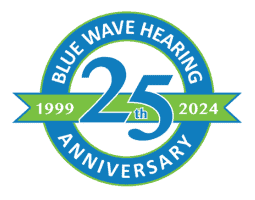- What Is Single-Sided Hearing Loss? - July 11, 2024
- Whistling Hearing Aids – Causes and Solutions - June 8, 2024
- Tips For Itchy Ears - May 6, 2024
You probably use your tablet or smartphone often to stream music, TV shows, or movies. In fact, many websites these days auto-play videos regardless of whether you want them to.
Smartphones, tablets, and other types of portable music players (PMPs) are now commonplace, as are earbuds and headphones. But if your PMP is turned up too loud while wearing earbuds or headphones, you can damage your hearing quickly. Let’s look at why.
NIHL
This isn’t some new sports league — NIHL stands for noise-induced hearing loss, and it’s the second-largest cause of hearing loss worldwide.
You’re able to hear because of hair cells in your inner ear. These cells convert sound signals to electrical signals and send them to your brain, where they’re interpreted as sounds. But loud sounds can actually damage or destroy your hair cells.
Every time a hair cell gets damaged, you lose a little bit of your ability to hear, and that damage can’t be repaired. The result is NIHL.
How Headphones Hurt Your Hearing
Navigating noise is all about the decibels (a measure of sound pressure). You’re safe if the sound in question stays below 85 decibels (dB); above that, you’re in the action zone — protect your ears or risk hearing damage.
For comparison:
- A clothes dryer = 60 dB
No need for hearing protection - A gas lawn mower = 91 dB
Exposure can damage hearing in 2 hours - A tractor =100 dB
Exposure can damage hearing in 15 minutes - A chain saw = 112 dB
Exposure can damage hearing in less than 1 minute
Some PMPs can generate 112 dB — in other words, if you like to listen to your PMP at full volume, you’re likely pumping a chain saw’s worth of noise at your ears from centimeters away.
Why Protecting Your Hearing Matters
Hearing loss is connected to overall health in surprising ways. It’s been linked to depression, cardiovascular disease, diabetes, cognitive decline, dementia, and other health concerns.
But it’s not just a concern for later in life: One study found that any degree of hearing loss early in life increases a child’s risk for language and learning problems.
Considering that one study of PMP use in 9-to 11-year-olds reported that 9 in 10 children and teens use some form of audio-streaming device for education or recreation, PMPs pose a considerable hearing health risk at all ages.
Indeed, that same study found that 14 percent of the children had measurable hearing loss. In addition, if a child listened to their PMP only once or twice a week, it doubled their chances of hearing loss compared to children who didn’t use a PMP.
What You Can Do
- Enforce the 60/60 rule. Don’t turn the volume of your PMPs up past 60 percent of full volume, and turn the device off completely after listening for 60 minutes so your ears can have a break.
- Use headphones instead of earbuds. With earbuds, you pick up background noise, which often leads to turning up the volume on the PMP to hear the audio better. Headphones that surround the ear keep the background noise to a minimum, allowing you to leave the volume at or below 60 percent. Even better, invest in noise-canceling headphones.
- If you must use earbuds, make them in-ear earbuds. With these earbuds, the earpiece sits inside the ear canal, rather than just outside it. The sleeve around the speaker blocks out background noise and keeps your audio from escaping the ear canal.
- Use the sound limiter built into the PMP. Many devices allow you to limit how loud the volume goes, or the device has a built-in alert telling you you’re risking hearing damage by pushing the volume higher.
- For kids, get volume-limiting headphones. Though there are many child-friendly options for headphones that will keep the volume from going over 85, it’s best to read up on whichever pair you choose to buy. Research by Wirecutter found that, of more than 30 brands tested, almost half were not effective at keeping the volume below 85 dB.


